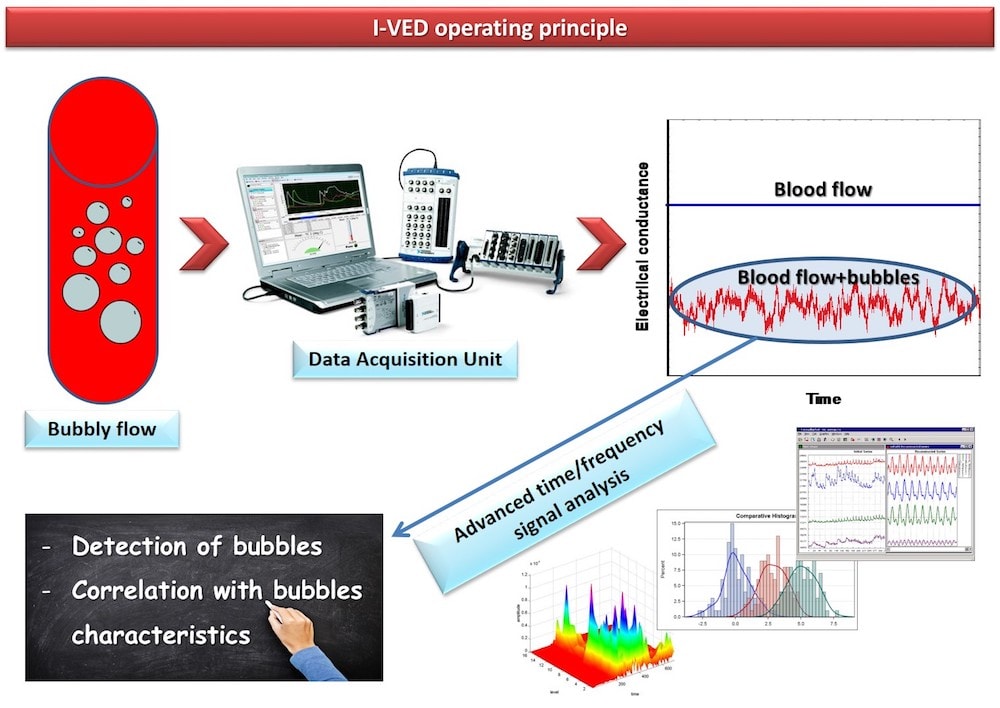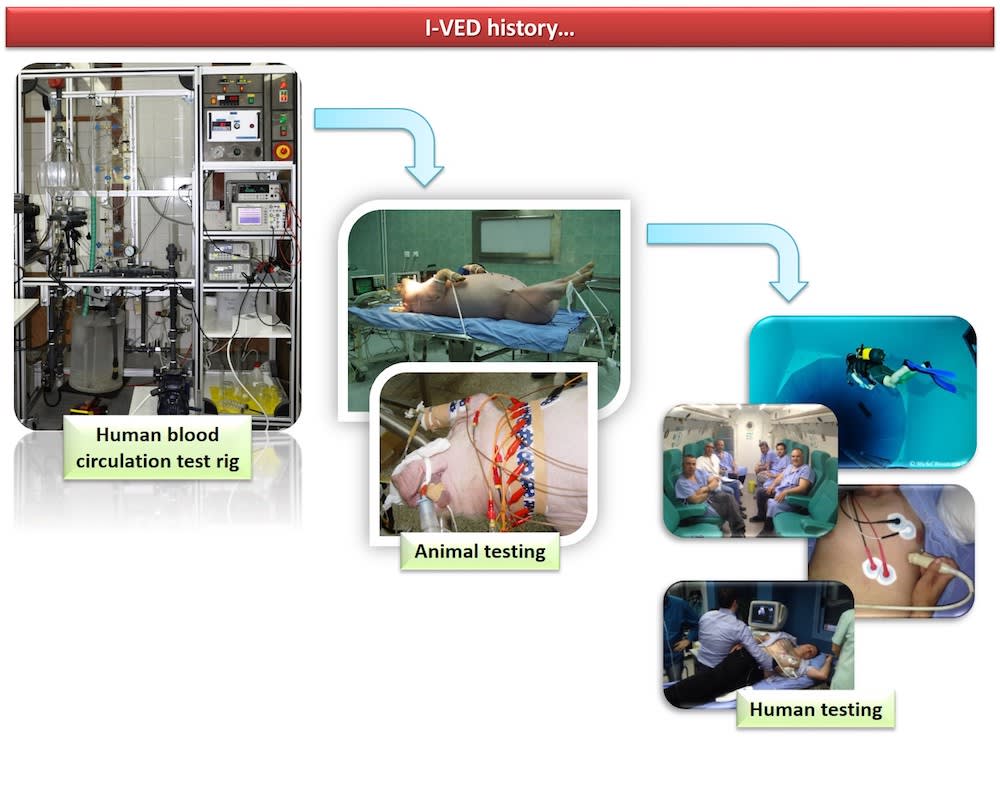I-VED (In-Vivo Embolic Detector) refers to a novel electrical impedance spectroscopy device (European Patent Office, 3005942 Α1, 2015) for the non-intrusive detection of bubbles in the human body during Decompression Sickness, DCS (e.g. in astronauts, scuba divers, etc). Currently, acoustic devices are employed for sensing bubbles in humans. However, such detection is feasible only after the end of the exposure at reduced environmental pressure since acoustic devices are bulky, motion/sound sensitive and require trained personnel. On the contrary, I-VED device is designed to provide real time, on-line, bubbles detection in the human body during ExtraVehicular Activities of astronauts or scuba-diving. This is achieved by means of a wearable device to be incorporated in the spacesuit/wetsuit and by electrodes adhering to the skin. I-VED measures the electrical impedance of the human body in a broad range of excitation frequencies. The innovative hardware and signal analysis software of I-VED diminish electrical interferences and offer a detection sensitivity two orders of magnitude higher than other conventional methods.
I-VED was first calibrated and validated in-vitro in a benchtop flowloop that resembles DCS conditions in the human bloodstream. It was shown that the technique can reliably sense the presence of even a few bubbles with size down to 10 μm and, in addition, it allows estimation of their average size. This is based on the analysis of specific electrical signal features. Then, I-VED was tested in-vivo. Bubbles were either infused in the blood circulation of swines and of volunteer divers or generated by decompression in the body of volunteer divers. The latter was achieved by well-controlled dry dives in the Decompression Chamber of Hyperbaric Medicine Lab, in St. Paul General Hospital of Thessaloniki, Greece, and by well-defined wet dives in the NEMO 33 thermostated swimming pool in Brussels, Belgium. Electrical measurements were validated against ultrasound ones. Results demonstrated that I-VED can confidently detect the presence of both infused and generated bubbles. Signal analysis based on advanced algorithms (such as FFT/STFT, wavelets, spectrograms, HHT) enhanced considerably I-VED performance.
At this point, I-VED development has reached a Technology Readiness Level 5 and is currently in the pursuit of prototyping and commercialization. Its introduction to the market is considered feasible since: a) it is a novel and useful tool for astronauts’ and more than 6 million scuba divers’ health monitoring and b) acoustic devices cost more that 30k€ while I-VED will cost ~1000€.
Like this entry?
-
About the Entrant
- Name:Konstantinos Zacharias
- Type of entry:teamTeam members:Prof. Thodoris Karapantsios (Chemical Engineer) Dr. Sotiris Evgenidis (Chemist) Dr. Konstantinos Zacharias (Electrical Engineer) Dr. Thodoris Mesimeris (Hyperbaric Medical Doctor)
- Patent status:patented








